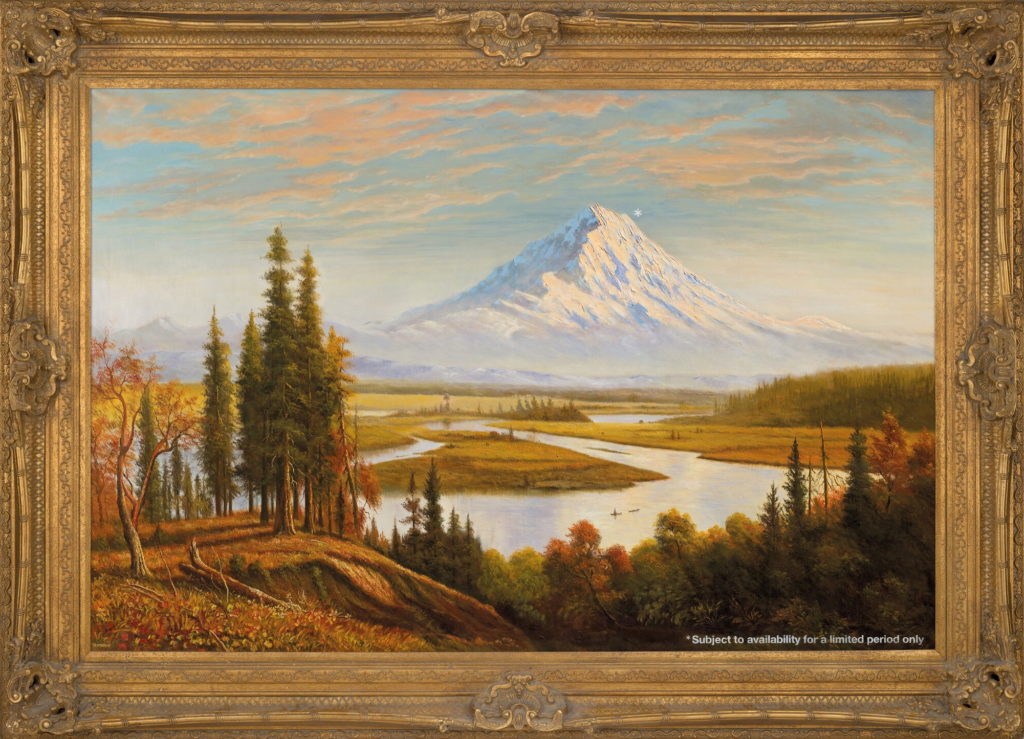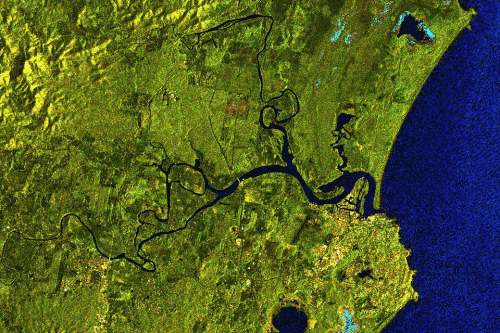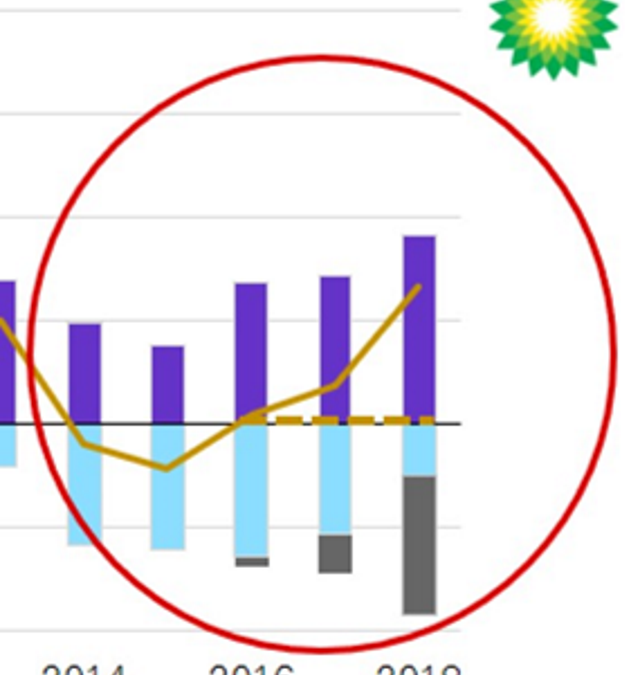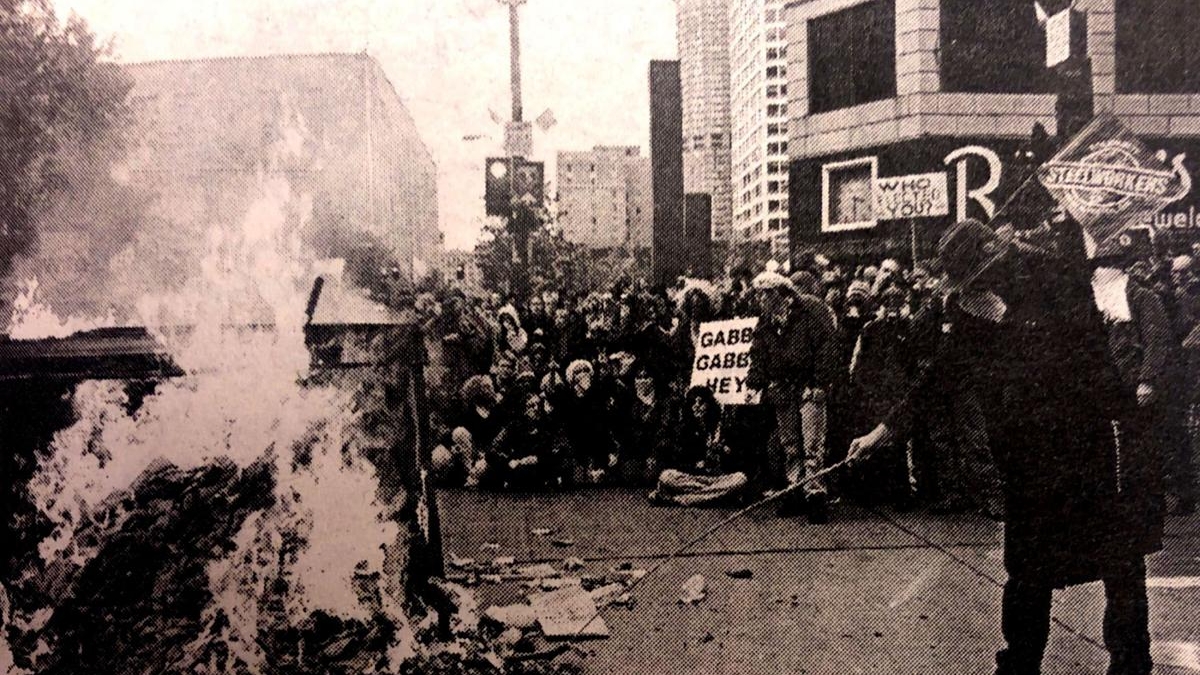Artist Banksy’s “hijacked” painting of Mount Rainier sells for more than $6 million as global warming roasts the Pacific Northwest

By Megan Burbank
30 June 2021
(The Seattle Times) – As the Puget Sound region coped this week with extreme heat caused by climate change, one of the art world’s most audacious commentaries on the issue reemerged across the Atlantic.
A 2009 work of creative vandalism from British artist and agitator Banksy, Subject to Availability, was sold at Christie’s King Street in London Wednesday. The painting’s subject is a beloved feature of the Northwest: Mount Rainier.
A prolific street artist, Banksy has long maintained his anonymity despite rising fame and multimillion-dollar private sales. Christie’s estimated the value of Subject to Availability at between 3,000,000 and 5,000,000 British pounds, or about $4,152,900 to $6,921,500 in U.S. dollars. It sold Wednesday for 4,582,500 pounds, or $6,342,180.
To create Subject to Availability, Banksy “hijacked” an 1890 painting by artist Albert Bierstadt, said a Christie’s spokesperson. Though Bierstadt, a German American painter, lived in New York, he frequently visited — and painted — the American West during his lifetime.
Bierstadt was a fitting conceptual reference for Banksy’s reckoning with climate change. As a spokesperson for Christie’s explained, Bierstadt was a member of the Hudson River School, a group of painters who “railed against the industrial revolution’s destruction of nature.”
Witty, satirical and timely, Subject to Availability is an important work from Banksy’s celebrated series of vandalised oil paintings. Hijacking an 1890 painting of Mount Rainier in Seattle by the German-American artist Albert Bierstadt, Banksy inserts an asterisk next to the volcano at the centre of the composition, captioning it ‘*subject to availability for a limited period only’. Bierstadt was a leading member of the Hudson River School, who railed against the industrial revolution’s destruction of nature. Operating over a century later, Banksy updates the political commentary of his forebear: the sweeping panorama, suffused with Romantic heroism and grandeur, is reduced to a terminal commodity, poised on the brink of expiry. Painted in 2009—the year of the UN Climate Change Conference in Copenhagen—the work was included in Banksy’s legendary exhibition Banksy versus Bristol Museum, alongside his monumental Devolved Parliament. Its message was hauntingly prophetic: in February 2020, Mount Rainier National Park was forced into temporary closure due to extreme flooding and mudslides.
Christie’s lot essay for Subject to Availability by Banksy
Banksy built upon that commentary by adding an asterisk and a tiny bit of corporate-speak to the painting’s bottom right-hand corner: “*Subject to availability for a limited period only.”
If that phrase feels newly resonant now that many are grappling with the impact of climate change on the West, that’s exactly the intended takeaway.
By design, Banksy created Subject to Availability in the year of the UN Climate Change Conference in Copenhagen. He has often examined the fate of the environment through an activist lens — unsurprising for an artist whose work has covered all manner of social issues. […]
After the 2009 Copenhagen conference ended without a legally binding treaty to mitigate climate change, Banksy painted the phrase “I DON’T BELIEVE IN GLOBAL WARMING” on a wall adjacent to Regent’s Canal in London, the letters appearing to sink into the water like so much coastline. […]
What differentiates a piece like Subject to Availability from these works of street art is its reference to past artistic traditions that — contrary to the forces driving climate change — revered nature.
“In the present work, Banksy’s deliberate nod to the Romantic era — a period that glorified the sublime majesty of nature — serves to underscore the tragic reality latent in his asterisked quip,” reads the catalog text. The grand original image, “suffused with Romantic heroism and grandeur, is reduced to a fleeting commodity.” [more]
Artist Banksy ‘hijacked’ a painting of Mount Rainier to make a point, and now it’s worth millions


